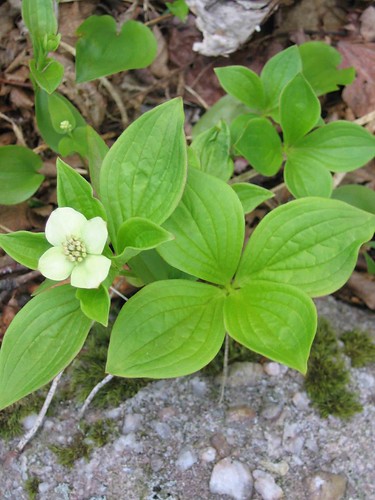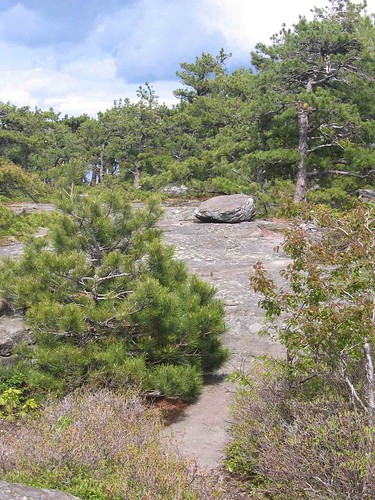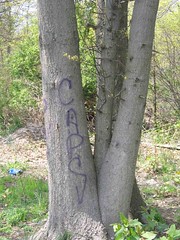Catskills 3

Painted trillium (Trillium undulatum)
Balsam fir (Abies balsamea)
Bunchberry (Cornus canadensis)
Hobblebush (Viburnum alnifolium) a very lovely and very common shrub in these parts
Marsh violet (Viola cucullata)
MAY 30, 2005
SLIDE MOUNTAIN
TREES
Balsam fir (Abies balsamea)
Moosewood (Acer pensylvanicum)
Red maple (A. rubrum)
Sugar maple (A. saccharum)
Mountain maple (A. spicatum)
Yellow birch (Betula alleghaniensis)
Mountain paper birch (Betula papyrifera var. cordifolia)
Beech (Fagus grandifolia)
Red spruce (Picea rubens)
White pine (Pinus strobus)
Pin cherry (Prunus pensylvanica var. pensylvanica)
Choke cherry (P. virginiana)
Black cherry (P. serotina)
Red oak (Quercus rubra)
Mountain ash (Sorbus americanus)
Eastern hemlock (Tsuga canadensis)
SHRUBS
Large leaf holly (Ilex montana)
Mountain laurel (Kalmia latifolia)
Partridgeberry (Mitchella repens)
Skunk currant (Ribes glandulosum)
Appalachian gooseberry (Ribes rotundifolium)
Northern blackberry (Rubus allegheniensis)
Red raspberry (Rubus idaeus)
Red elderberry (Sambucus racemosa var. racemosa)
Early lowbush blueberry (Vaccinium angustifolium)
Hobblebush (Viburnum lantanoides)
FORBS
Mountain aster (Aster acuminatus) (syn. Oclemena acuminata)
Wild sarsaparilla (Aralia nudicaulis)
American golden saxifrage (Chrysosplenium americanum)
Spring beauty (Claytonia caroliniana)
Bluebead (Clintonia borealis)
Threeleaf goldthread (Coptis trifolia)
Bunchberry (Cornus canadensis)
Trout lily (Erythronium americanum)
Largeleaf avens (Geum macrophyllum var. macrophyllum)
Canada mayflower (Maianthemum canadensis)
Whorled wood aster (Oclemena acuminata) – Aster
Common wood sorrel (Oxalis montana)
Large-leaved goldenrod (Solidago macrophylla)
Claspleaf twistedstalk (Streptopus amplexifolius var. amplexifolius)
Twisted-stalk (S. roseus)
Starflower (Trientalis borealis)
Wake robin (Trillium erectum)
Painted trillium (T. undulatum)
Wild oats (Uvularia sessilifolia)
Sweet white violet (Viola blanda)
FERNS & ALLIES
Intermediate fern (Dryopteris intermedia) Evergreen fronds old & newly emerging
Shining clubmoss (Huperzia lucidula)
Running clubmoss (Lycopodium clavatum)
Ground pine (Lycopodium obscurum)
GRAMINIODS
Northern long sedge (Carex folliculata)
Greater bladder sedge (Carex intumescens)
Common hairgrass (Deschampsia flexuosa)
Small-flowered woodrush (Luzula parviflora)







































